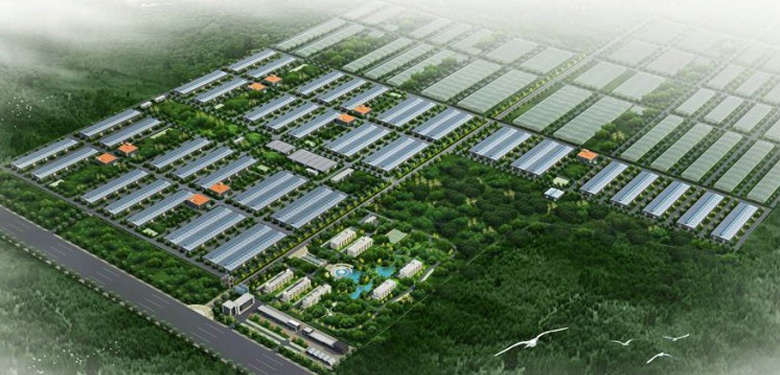
Are standardized eco-industrial parks the answer to sustainable industrial growth?
Eco-industrial parks (EIPs)1 are an emerging driver for environmentally and socially sustainable economic growth. The number of parks globally has grown from 50 in 2000 to around 250 today. However, despite their proliferation, there is no internationally accepted definition of what constitutes an EIP -until now.
At the turn of the year, the World Bank, UN Industrial Development Organisation (UNIDO) and German Development Cooperation published ‘An International Framework For Eco-Industrial Parks’, which sets out a common understanding of what constitutes an EIP and offers a framework for EIP development. It is significant as it:
- Includes economic, social, environment and park management performance requirements (see Figure 1)
- Provides clear prerequisites for EIPs and suggests specific performance requirements that can be adjusted to national frameworks
- Provides examples on how the framework can be enhanced or converted into a grading scheme (e.g. traditional IP, bronze, silver, gold – depending on performance against requirements)
- Is applicable across developed, transitioning and developing countries
- Can support the planning and development of new Eco-Industrial Parks, as well as to the conversion and optimization of existing industrial parks into Eco-Industrial Parks.

Figure 1: Source: World Bank. Overall Framework for Describing Eco-Industrial Parks
International standardization, the framework’s greatest asset, will benefit both the public and the private sectors as it complements existing tools and allows for benchmarking of EIPs regardless of size or location. With clearly set out quantitative and qualitative prerequisites and requirements it can also support the resident industries’ contribution to the Sustainable Development Goals and nationally declared contributions to the Paris Agreement.
Eco-industrial parks in action
EIPs are designed and built according to the ideas of the circular economy and industrial symbiosis, they promote collaboration between resident firms in managing environmental and resource issues, including energy, water, and materials. The aim is to improve the economic performance of the participating companies while minimizing the collective environmental impact.2 Examples of their benefits can be found across the globe.
Ulsan Mipo and Onsan Industrial Park, South Korea: Government investment of USD $14.8 million spurred resident firms to collectively invest USD $520 million in clean production and industrial symbiosis including steam and by-product supply. The investment yielded savings of USD $554 million and generated USD $91.5 billion in revenues while significantly reducing CO2 emissions and other pollutants.
Kalundborg Symbiosis, Denmark: Through the economic benefits associated with by-product exchanges of high value (steam and heat) and lower value (water), the park generates total savings of approximately USD $99 million per year and at the same time has secured jobs, reduced CO2 emissions by 240,000 tons per year and saved some 3 million m3 of water through recycling and reuse.3
China’s Shanghai Chemical Industrial Park (SCIP): Saw a profit 141.2% increase from 2008 to 2011 in part because of efficiency gains associated with on-site industrial symbiosis between its petrochemical companies. For example, polyvinyl chloride (PVC) is a reaction product of chlorine and ethylene. In SCIP, surplus chlorine will be piped from the Shanghai Caustic Soda and PVC Project to BASF to produce the building blocks of products like adhesives. The by-product, hydrochloric acid, is returned to the PVC facility and reacted with ethylene to yield PVC. Costs are cut and the utilization of chlorine doubled, yielding both economic and environmental returns (Lowe, 2001).
Why operate in an eco-industrial park?
The economic benefits from operating in an EIP include revenue and profit generation, job creation, and competitiveness as well as access to additional investment resources for resident industries. Further benefits from operating in an EIP can:
- Improve resource and waste management (and reduce costs)
- Green the supply chain and alleviate resource constraints
- Diversify revenue streams
- Ensure infrastructure is resilient to higher resource costs and adapts to climate change risks
- Respond to environmental and social concerns from consumers
- Access to labour pool
- Access to collaborative business opportunities
- Access to investment capital
- Reduce environmental and social and reputational risk
- Ensure license to operate
- Avoidance of regulatory penalties
- Better security and crime prevention
The standardization of EIPs could be truly advantageous considering increasing pressure from a variety of stakeholder groups to reduce environmental and social impacts, and move towards more responsible resource consumption.
Benefits of the framework for businesses
A consolidated EIP assessment framework can help businesses when deciding whether to operate within an industrial park, as well as providing suggestions on how to invest in clean production technologies and processes. This is achieved through requirements for park management to:
- Apply national and international standards
- Invest in infrastructure and monitor performance
- Enact an EIP approach that maximizes possible returns for resident firms
- Achieve a level of disaster preparedness and risk management
In addition, the framework encourages alignment with international industry best practice where national requirements fall short, and focuses on day-to-day operational aspects that can be controlled or influenced by the industrial park’s management, which in turn can improve accountability.
Beyond business
EIPs have become an increasingly effective option to overcoming social and environmental challenges related industrial development. Moreover, they foster inclusivity through outward integration to local communities, companies, industrial parks and cities.

Figure 2: Source: UNIDO. Industrial-urban symbiosis
The development of the standardized ‘International Framework for Eco-Industrial Parks’ should accelerate this, as it facilitates benchmarking of EIPs stimulating competition between parks, economic zones and nations. This encourages collaboration between the public and private sectors, pushes parks to go beyond compliance and drives continuous improvement. By applying this common international EIP framework, industrialization can be profitable, inclusive and sustainable.